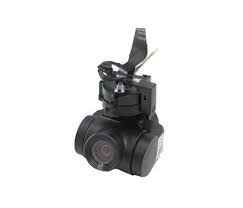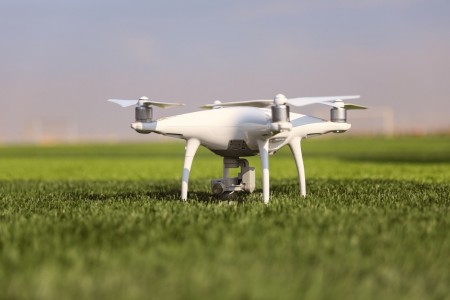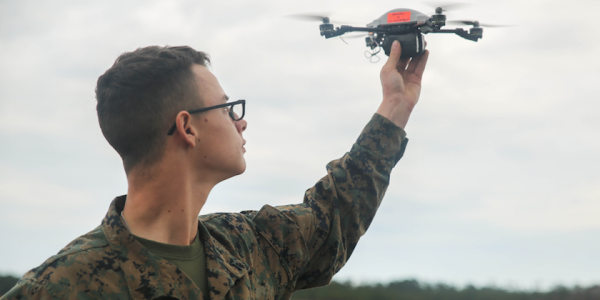
Many manufacturers of unmanned solar powered drones have presented their products. Envision Solar and Boeing are among them. These drones can be used by military agencies to operate solar-powered aircraft. We take a look at the latest test flights and the technology that underpins them. We'll start with the HAWK30, which is a Japanese-made, solar-powered drone measuring 256 feet in length.
Boeing SolarEagle (Vulture II)
Boeing, a subsidiary aerospace giant, has created the Vulture II. This is a fully-solar-powered unmanned aerial drone. The Vulture II will be able stay airborne for up five years making it an ideal drone to use by the military. The government awarded it a $89million contract to develop its aircraft. This drone will be flying its first demonstration flight sometime between 2014 and 2015, and could one day replace satellites.
Boeing SolarXOne
SolarXOne is an affordable, solar-powered drone with a payload capacity of up to 5 kg. It is compliant with aviation standards and features the most recent safety and communication technology. The company that markets this solar-powered drone, XSun accepts orders. Its design speaks to its mission and can be used for a variety of purposes.
Envision Solar
Envision Solar powered drones are a promising option to fight climate change. They can both collect and disseminate renewable energy. The company is currently working on a charging infrastructure so that drones can be powered even without a connection to the grid. Envision Solar drones can travel virtually anywhere on the planet without needing additional infrastructure, fuel, and a connection to a grid. As a result, they'll be more environmentally friendly than conventional drones, and they'll be a better choice for environmentalists.

XSun
The XSun solar-powered drone is a unique hybrid of a drone & an airplane. It weighs in excess of 25kg and can span 4.50 meters. The XSun features many remarkable features. It can fly up to 12 miles long range. The XSun has incredible speed and can carry a massive payload of upto 5 kg. It can even do LIDAR measurements. The drone uses composite materials, and can fly for up 12 hours without charging.
Sunglider
The Sunglider, a large autonomous solar-powered drone, looks like a single long wing. It is equipped with ten propellers and can travel at 110 km/h. It can fly for hours, or even months, without needing to recharge. It can fly over commercial aircraft while charging its batteries with solar energy. The Sunglider also adapts to changing winds and can drift independently. Sunglider is a very successful project for many companies.
Boeing
A prototype of the Boeing solar-powered drone, which will cross the English Channel twice (from Sangatte to Dover) on September 14, 2020. This aircraft is lightweight and features 10 propellers. Solar panels mounted on the wing surface of the aircraft provide power for its high-energy, lithium-powered battery. It has a flight speed of around 100 km and a wingspan approximately 256 feet. While in flight, the drone can maintain a speed of seven kilometers.
Airbus
It's not the first time that companies have pondered the idea of using solar energy to power a drone, and Facebook's Aquila project is only the latest example. Boeing's Phantom Works division filed for a patent to protect its HALE aircraft. BAE Systems, on the other hand, is developing a similar drone. Airbus, however, has mainly focused on passenger drones over the last few years. Its Zephyr S drone, which will fly in September, is ready to go.

Astrium
The Aurora solar-powered drone is the first. Boeing purchased the company in 2012 and started the program. It is now owned by Airbus, which purchased the program in 2013. The Odysseus prototype was the original prototype. It could hold 55 pounds payload. It can deliver 250 Watts of power to its payload. This shows the effectiveness lightweight solar cells.
FAQ
Where can I find a drone for sale?
You can buy many types of drones online. Some people prefer to buy drones online via Amazon, eBay and Walmart. Others prefer to purchase drones directly through the manufacturers.
Do I require special training to fly a drone
No, you don’t need any special training in order to fly your drone. You will only need a remote control unit, and some knowledge about flight mechanics.
Is it possible to fly a helicopter while driving?
Drone flying at high speed is dangerous. You also risk hitting pedestrians or other animals. In addition, you could damage your car by hitting power lines, trees, or buildings.
Which US states make drones legal?
A drone can be legally operated for recreational purposes. Federal Aviation Administration (FAA), has issued guidelines that allow you to use small unmanned aircraft systems (UASs). These UASs must be registered with the FAA before they can be flown. These UASs can also be flown by commercial operators if they are allowed to fly under certain conditions.
Statistics
- According to ZipRecruiter, the minimum hourly wage of drone pilots is $20. (thedroneu.com)
- Research and Markets predict a growth rate of 51.1% over the next five years. (thedroneu.com)
- With the top 10% making over $100/h and the bottom 10% making as low as $10/h. (dronesgator.com)
External Links
How To
How to Fly Drones for Beginners
A drone refers to a remote-controlled aircraft designed for aerial photography, surveillance and scientific research. Drones have been in use since World War II. DJI's Phantom series of quadcopters was the first to be commercially used. Many types of drones have been made available since then, from beginner-friendly models such as the Parrot AR Drone 2.0, to high-end multi-rotor craft such as the DJI Mavic Pro.
There are several ways to fly a drone, including;
-
Remote control - This method uses a control device attached to your hand, which enables you to steer the drone through its flight path. There are two main types: Joysticks (like a radio), and On/Off switches (like an alarm clock).
-
Manual Control – This allows remote operation of the drone via GPS coordinates using a smartphone application. The app will provide instructions and help you to locate the drone.
-
Autonomous flight - The drone takes over the piloting duties. The drone is able to fly autonomously, without the need for human intervention. A drone must have a builtin camera and sensors capable to capture images and other data.
-
Triggered Flight: This is similar in concept to manual control. The pilot manually creates a route and the drone then follows it until it reaches that endpoint. The drone automatically lands once the route has been completed and returns to the base.
-
Landing Gear – A few drones come with landing gear. This allows them land safely in the event of losing power or running out of battery.
-
Goggles-Some pilots use goggles to protect their eyes from debris during operations.
-
Camera – Some drones have cameras, which allow you to take photos or videos from up high.
-
Obstacles-Some drones come with obstacle avoidance devices that keep them from hitting obstructions.
-
Speed – Some drones can reach speeds in excess of 40 mph.
-
Battery Life - Most drones are capable of lasting between 20 minutes and three hours, depending on the power that you use.
-
Some drones have a range of up to 30 miles, depending on their model.
-
Power source - Some drones require an external power source; others work off internal batteries.
-
Weight – Some drones are less than one pound, while other models can be up to four pounds.
-
Size - From small drones that can be carried in the palm of one's hand to larger drones that weigh over 50 pounds, drones come in a variety of sizes.
-
Price - High-end drones can go for thousands of dollars, while low-cost models start at $100.